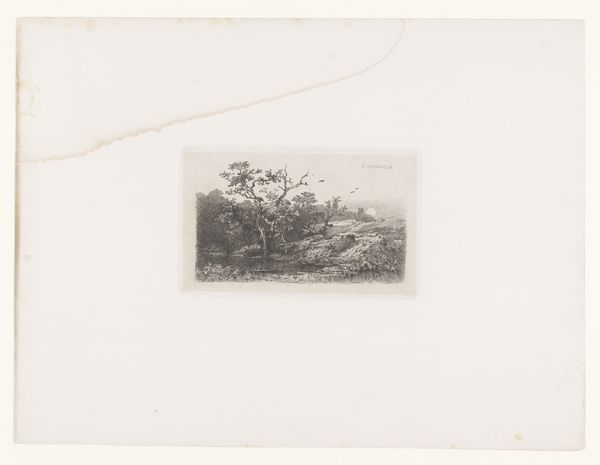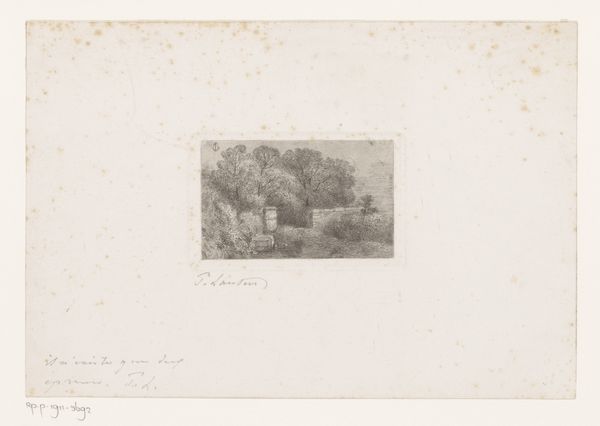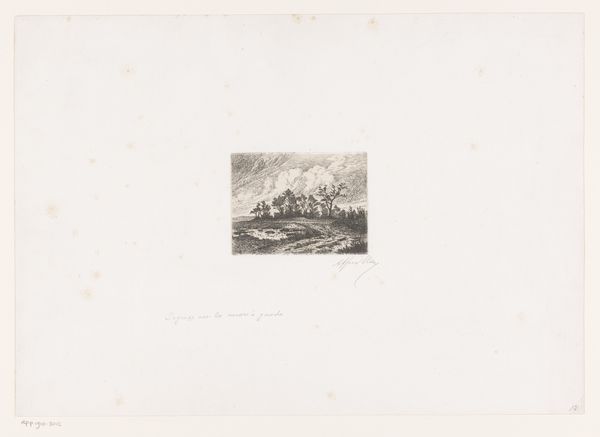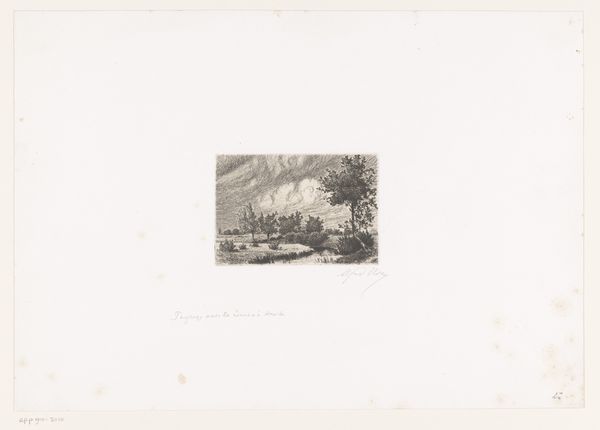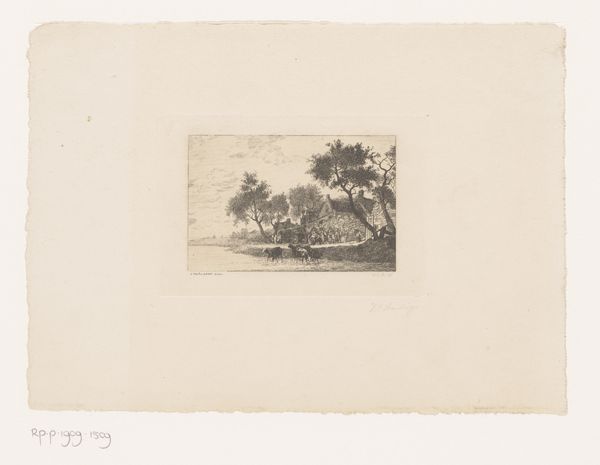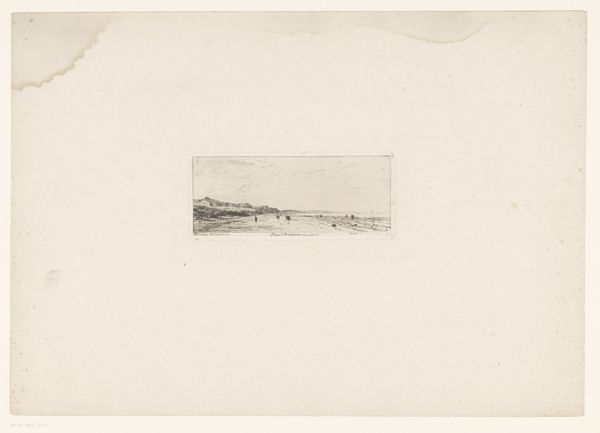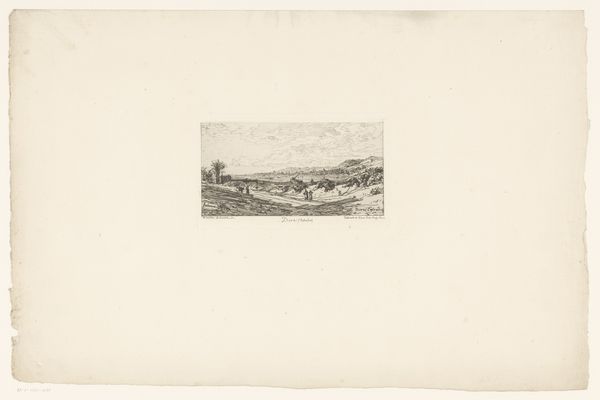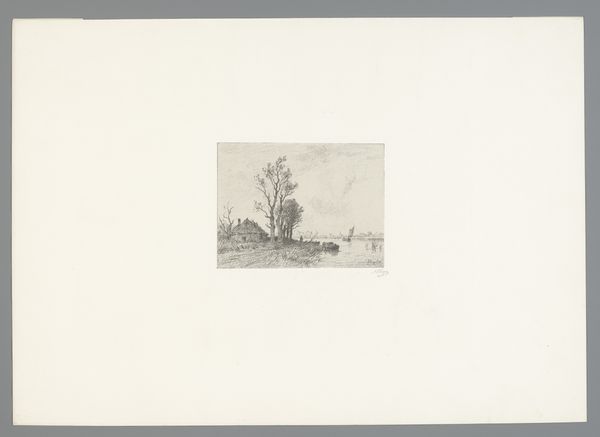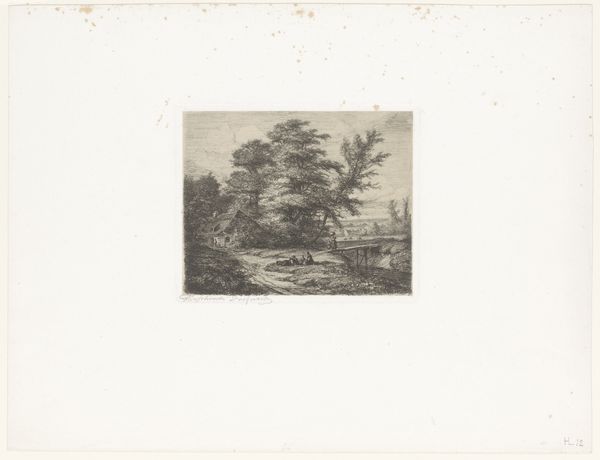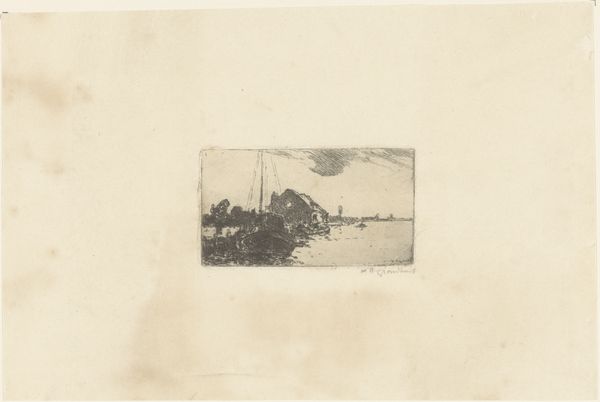
print, etching
# print
#
etching
#
landscape
#
realism
Dimensions: 2 1/16 x 5 5/8 in. (5.24 x 14.29 cm) (plate)12 1/8 x 17 1/8 in. (30.8 x 43.5 cm) (sheet)
Copyright: Public Domain
Curator: Welcome! We're standing before Stephen Parrish's "Calling the Geese," an etching from around the 19th century, currently residing here at the Minneapolis Institute of Art. Editor: My first impression is of a hushed landscape, rendered with such delicacy. It's monochromatic and possesses this hazy, dreamlike quality—almost like a fading memory. The horizontal composition is very calming. Curator: It’s the etching technique, isn't it? Consider the laborious process, the meticulous scratching into the metal plate. Each line is a conscious decision, contributing to this serene scene of rural labor. This was, in many ways, a product of its time, a reflection of a growing industrial society looking back nostalgically at agrarian life. Editor: Absolutely, and Parrish really excels at manipulating light and shadow with these precise lines. The interplay between the dark, textured trees and the lighter sky creates depth. Notice also the carefully structured organization—the geese in the field offset against the lone figure calling to them. Curator: Right, the act of “calling” in itself implies communication, human interaction within the natural order. This links to wider dialogues of labor and how humans have sought to make a life out of material exchange. Look at how labor-intensive etching is, how that labor produces the imagery we see displayed today. Editor: I agree. Thinking purely in formal terms, there is this tension between realism and an almost idealized portrayal of nature. It captures a specific scene yet suggests something universal. What do you think this choice reveals about his artistic intention? Curator: Perhaps the commercial art market shaped that intention. Landscape prints were becoming popular for consumption by those seeking a vision of "pure" nature. And the artist? Part of a growing commercial network involving materials, printsellers and middle class buyers. This print signifies labor for the viewer just as its making involved hard physical work. Editor: I love how Parrish distills the vastness of nature into such a compact frame. It reminds me to seek quiet beauty, and appreciate those simpler modes of visual expression. Curator: Indeed, it offers a fascinating insight into both the means of artistic production and the consumption of idealized rural imagery during that era.
Comments
No comments
Be the first to comment and join the conversation on the ultimate creative platform.
